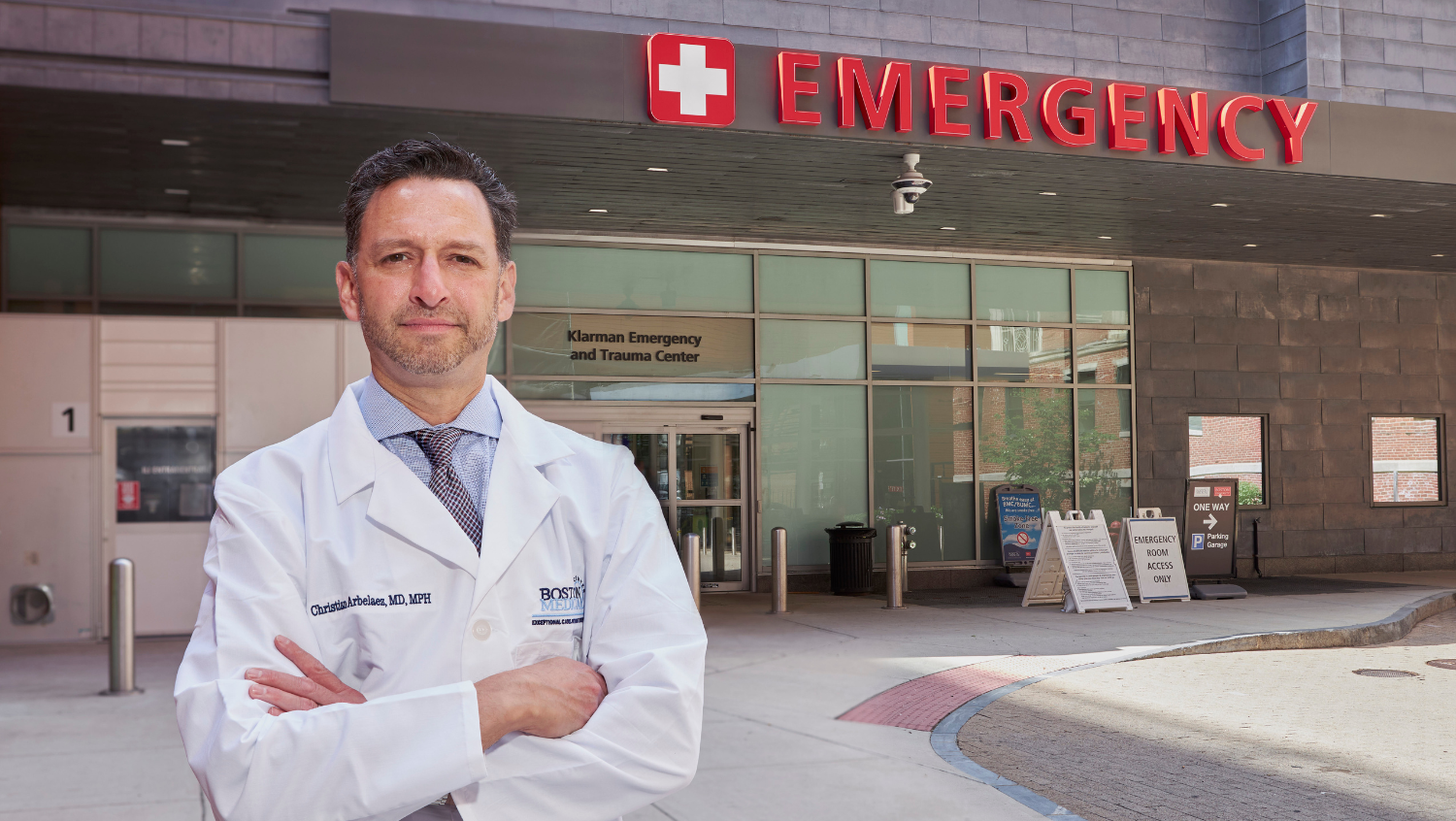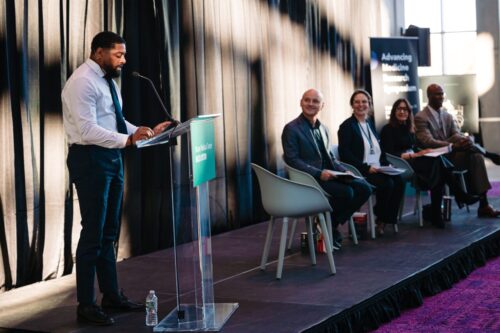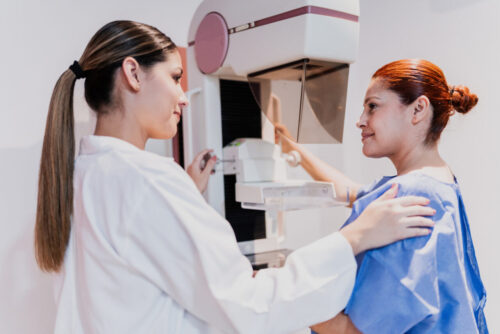15 Essential Hospitals Try to Answer, "How Can We Have Healthy, Thriving Communities?"
June 29, 2023
By Caitlin White, By Katie Dillon

Boston Medical Center
Boston Medical Center headlined a conference of leaders in emergency medicine, focused on the future and how to innovate in the face of multiple pressing challenges.
Emergency departments across the country were uniquely burdened by the COVID-19 pandemic, given that they are hubs for community engagement that often serve the most vulnerable patient populations. With existing challenges exacerbated by the pandemic, Boston Medical Center’s Chief and Chair of Emergency Medicine Christian Arbelaez, MD, MPH, started thinking about the ways in which ED staff and leadership at essential hospitals could both help each other and create an opportunity to reshape emergency care overall.
To achieve this, Arbelaez developed the Leaders of Essential Emergency Departments Conference, a three-day gathering that featured conversations and working groups with national leaders in medicine, policy, government, and more. The goal? To have a convening of ideas and innovations, sharing of best practices, and setting of policy agendas.
Led by Boston Medical Center, the June conference included attendees from 15 essential hospitals. U.S. Senator Edward Markey spoke, and Purva Rawal, PhD, Chief Strategy Officer of the Centers for Medicare and Medicaid Services Innovation Center gave the keynote speech.
HealthCity sat down with Arbelaez to talk about ideas coming out of the conference, the most pressing issues for essential emergency departments, and future strategies for care.
HealthCity: What made you decide to create this Leaders of Essential Emergency Departments conference?
Christian Arbelaez, MD, MPH: COVID really brought the healthcare system to its knees, particularly hospitals who are providing care for some of the most vulnerable patient populations all while facing significant financial challenges. Long before COVID, EDs were facing behavioral health, substance use, and refugee migrant public health crises.
And you can very easily say, “Okay, let’s get back to normal operations.” But there was a moment of realization for me that we have to do something to learn from this. We have to figure out a way to be better prepared for the next serious threat. In December, we got philanthropic support. And then I had the wild idea: Could we convene the leaders of essential emergency departments from across the country? Bring them together to really learn from each other.
HC: What kinds of providers were invited to this Leaders of Essential Emergency Departments Conference?
CA: The challenges the healthcare systems are facing need to be done in a team fashion, with physician, nursing, and administrative leadership.
We find real value in using this triad model to create a unified approach to the challenges. We need this whole group to collectively agree and be on the same page with any new innovative process improvement.
HC: What are the most pressing challenges that leaders in emergency departments of essential hospitals were discussing and innovating toward at this conference?
CA: We asked about top challenges in the past three years during COVID and the consensus showed these key top challenges: hospital capacity constraints, labor shortages, staffing challenges, behavioral health, and vulnerable patient populations struggling with social determinants of health. These all seem to be things that essential EDs are all uniformly worried about.
Looking towards the future, financial issues seemed to be a concern that gravitated to the top. If we don’t have an ability to stay open, we’re not going to be able to meet the mission. Given those financial challenges, how do we shift from fee-for-service to alternative payment models and value-based care for a path forward toward financial sustainability? And really understanding that the incentives and the disincentives financially for health systems is important, and that’s the reason we had the senator [Markey], who’s on the HELP committee, there.
Second, we’re all drawn to work in mission-driven organizations, and particularly in the emergency departments, because that’s where we take care of anybody—no matter what insurance they have or don’t have. How do we as essential EDs continue to draw top talent? How do we continue to deliver excellent care, ensure health equity, and make an impact on the communities? A healthy, thriving workforce is critical for every city, and many of our health systems are the engines for this workforce. So how can we address the burnout of the frontlines, shift toward vitality, engagement, thriving, and try to address the workplace safety issues that have bubbled up?
Finally, from a health systems perspective: What role can we play with alternative care models that are innovative, disruptive, and create capacity outside the ED with key partnerships?
HC: How did these pressing issues play into the Leaders of Essential Emergency Departments Conference and next steps?
CA: As far as the conference, I think we exceeded our expectations. Everyone was really engaged and we made a call to action. We determined our goal to be a megaphone at the higher-level for policy agendas, research agendas, and action agendas from key organizations. One of the major takeaway actions from this conference will be to present our findings to the Centers for Medicare & Medicaid Services (CMS). It is really exciting for these leaders to share what is happening in emergency departments across the country to critically important organizations like CMS.
HC: How do these challenges and future innovations get communicated for the patients’ perspectives coming out of the inaugural convening of essential hospitals? What is the message for them?
CA: I think we aim to focus attention on critical issues and solutions that will impact our patients and communities. Our ultimate goal is to have healthy cities and healthy people living in those cities.
Increasing and improving access to care — primary care physicians, community health center partnerships, and behavioral health — out in the community is critical. The preventative care piece is really important and if we don’t fix it, these patients end up in the emergency department. I think patients want that and they deserve that.


